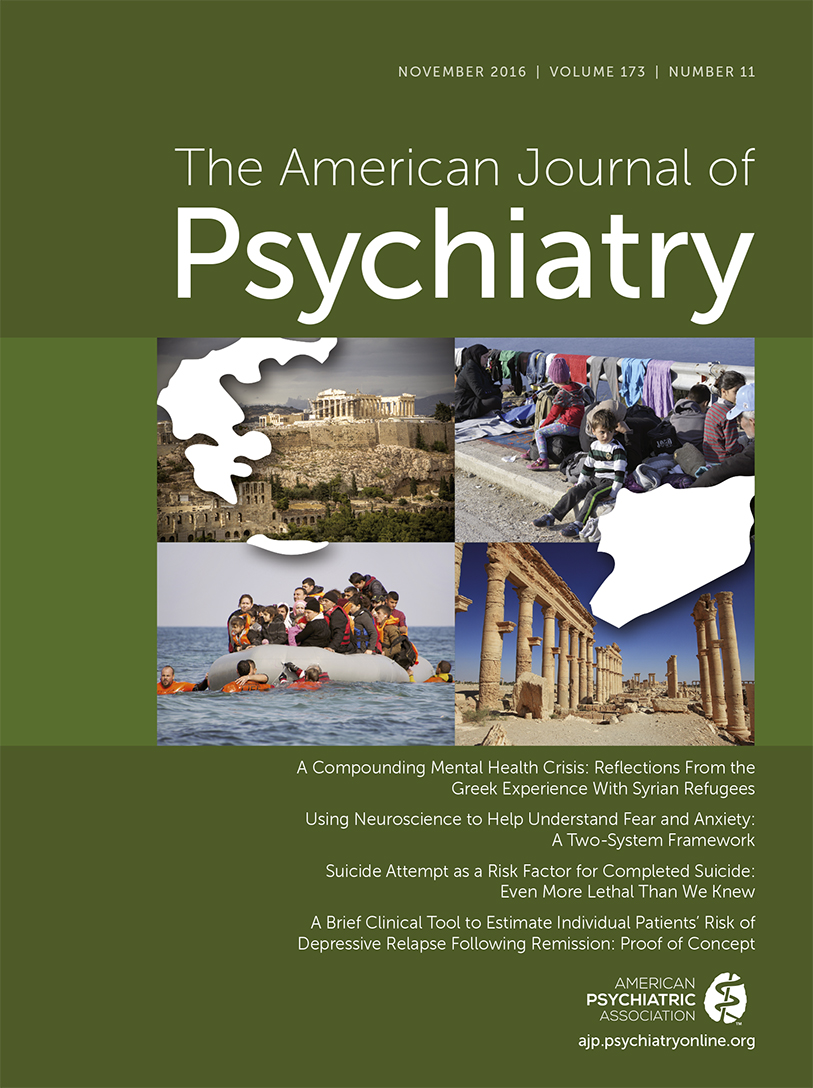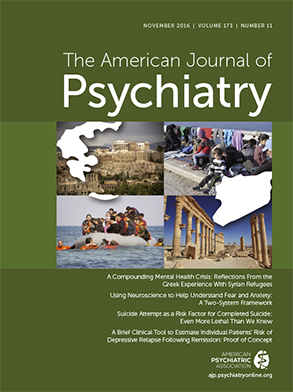Electroconvulsive therapy has been an important part of the psychiatric armamentarium for over 75 years. Although ECT is most often used as a treatment for depression, its benefits have also been demonstrated in patients of all ages with catatonia, mania, and, under some circumstances, schizophrenia and schizoaffective disorder (
1). Early in its history, ECT was the only available somatic treatment that was effective for severe psychiatric illness. However, with older techniques for ECT administration, side effects (including effects on cognition) were common. With the advent of psychotropic agents and concerns about ECT tolerability, its use became less frequent. Negative media portrayals fueled stigma about ECT and added to controversies about appropriate use. Despite all this, ECT remains our “go to” treatment—the approach that clinical studies and experience tell us is most likely to elicit a rapid and robust response, even with severe symptoms that have not responded to other interventions.
As with virtually all treatments in medicine, there are aspects of ECT that could be improved further. To maintain ECT benefits while minimizing cognitive effects, active foci of investigation have included new approaches: changing stimulus parameters, modifying electrode placements, prescribing adjunctive medications, or administering psychotherapy. Another challenging aspect of ECT practice is helping individuals remain well once ECT has exerted a salutary effort. Studies have shown that treatment with lithium in combination with nortriptyline after an index course of ECT can reduce relapse rates compared with placebo (
2). Other research shows lithium plus venlafaxine (
3) or continuation ECT alone (
4) to have relapse rates comparable to those for lithium plus nortriptyline. Even with these approaches, a substantial number of individuals will still have recurrent symptoms within 6 months of an acute ECT course. The articles by Kellner et al. (
5,
6) in this issue of the
Journal examine whether continuation ECT in combination with medication can maintain the acute antidepressant effects of ECT with acceptable tolerability and greater efficacy than continuation medication treatment alone.
In phase 1 of the Prolonging Remission in Depressed Elderly (PRIDE) study (
5), patients age 60 or older with unipolar depression received venlafaxine (in dosages of up to 225 mg/day) in combination with three-times-a-week right unilateral ultrabrief pulse ECT at a stimulus dose of six times seizure threshold. Of the 240 patients who began phase 1, remission was achieved in 61.8%, 28.3% did not complete the trial, and 10.0% were nonremitters. This remission rate was about twice that for antidepressants in comparable populations, although it was slightly lower than rates in previous studies that used brief pulse ECT. Also, compared with studies of antidepressants, ECT trials typically enroll patients with more severe symptoms (
7), and phase 1 of the PRIDE trial was no exception. The mean Clinical Global Impressions severity score was in the “markedly ill” range, and the baseline score on the 24-item Hamilton Depression Rating Scale was in the severe range (mean=31.2, SD=7.3). More than half the study subjects had the melancholic subtype of depression, and psychosis was present in more than 10%. Subjects typically had multiple psychiatric hospitalizations and a mean of 2.4 prior antidepressant trials. In short, this was a severely ill group of patients who had not responded to previous treatment, and yet they reached remission robustly and rapidly (in about 2.5 weeks) with ECT. Although the authors will be reporting findings of comprehensive neuropsychological testing in a later paper, few adverse effects were noted in global cognitive function, and the mean score on the Mini-Mental State Examination at the end of the trial did not differ significantly from baseline values.
In phase 2 of the trial (
6), remitters were randomly assigned to receive medication (venlafaxine plus lithium at low to moderate dosages) or medication plus ECT. Patients in the latter group received four continuation ECT treatments spaced out over the initial month with subsequent Symptom-Titrated, Algorithm-Based, Longitudinal ECT (STABLE). This approach allows a flexible individualized schedule of ECT adjusted according to the patient’s HAM-D score, and it approximates empirically based clinical practice. At the end of the 6-month trial, patients in the medication only group had a shorter time to relapse and a 1.7-fold greater odds of relapse than patients in the medication plus ECT group. In addition, those in the medication plus ECT group had a lower baseline-adjusted mean HAM-D score and were about five times more likely to be rated as “not at all ill” than those in the medication only group. As in the phase 1 portion of the trial, global cognitive functioning did not differ between the two treatment groups, and few adverse effects were reported.
The PRIDE study shows the advantages of adding continuation and “rescue” ECT to continuation pharmacotherapy to maintain the robust clinical benefits of an acute ECT course. The clear benefit of continuation ECT in the PRIDE study, in conjunction with few adverse effects, should lay to rest concerns expressed by the Food and Drug Administration (
8) and others about safety and efficacy beyond an acute ECT course. The PRIDE study also confirms that ultrabrief pulse right unilateral ECT, which may have fewer effects on cognition, elicits seizures effectively and sufficiently above the seizure threshold to produce clinical benefit in an older group of patients. This is important because geriatric patients often have difficult-to-treat depression, sometimes have baseline cognitive impairment, and may be more likely to develop cognitive side effects with ECT (
9). The tolerability of continuation ECT plus medication is also noteworthy because the medication treatment arm includes lithium. Although lithium in combination with an antidepressant has the best evidence for preventing post-ECT relapse (
2–
4,
10), it is often underused because of concerns about side effects, particularly in geriatric populations, and about toxicity in overdose, particularly in individuals at high risk for suicide.
In addition to its implications for patients, the PRIDE study offers insights into some of the challenges faced by guideline developers and health policy makers in applying high-quality evidence to clinical care. Unlike newer treatments that generate substantial corporate interest, improvement of older treatments such as ECT depends on governmental funding at a time when resources are tight and other research approaches may seem more novel. Obtaining an adequate sample of patients is difficult for an ECT trial, as many individuals are too physically or psychiatrically ill to meet inclusion criteria. While using multicenter, multiyear recruitment, as in the PRIDE study, is possible with depressed patients, such an approach is not feasible for less frequent diagnoses, such as catatonia, or for age groups such as children and adolescents. It is also impossible to test all permutations and combinations of treatment and clinical features (e.g., ages, physical or psychiatric comorbidities, ECT stimulus parameters or electrode placements, medication regimens). Thus, policy makers and guideline developers are frequently confronted with situations in which clinical experience is extensive but high-quality evidence is neither available nor, in many cases, even possible to obtain. For this reason, it is inevitable that decision making can never rely on the holy grail of high-quality evidence for every potential decision but will invariably need to extrapolate from the best available evidence. Consequently, evidence from well-designed research such as the PRIDE study must always be tempered by clinical wisdom, augmented by input from patients and families, cemented by a process of shared decision making, and focused on outcomes that matter to the individual patient.

